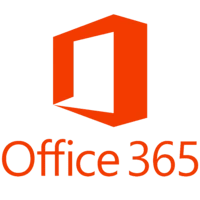
Latest Version
141.303
May 25, 2024
Photo & Design
Windows
55,736
Report a Problem
More About Picasa
Certainly! Here's a 1500-word comprehensive essay on Picasa, covering its history, features, impact, and eventual discontinuation.
---
### Picasa: A Journey Through Digital Photo Management
#### Introduction
In the era before smartphones became ubiquitous and social media platforms dominated the digital landscape, managing and editing digital photographs posed a significant challenge. Amid this context emerged Picasa, a photo management application that revolutionized the way users organized, edited, and shared their photos. Launched in the early 2000s, Picasa played a pivotal role in making digital photo management accessible and user-friendly for millions of users worldwide. This essay delves into the history, features, impact, and eventual discontinuation of Picasa, highlighting its contributions to the evolution of digital photo management.
#### The Genesis of Picasa
Picasa was originally developed by a company named Lifescape, Inc., which was founded by a group of Silicon Valley entrepreneurs. The application was first introduced in 2002 and quickly gained popularity due to its intuitive interface and robust features that catered to both novice and advanced users. In 2004, Google recognized the potential of Picasa and acquired it, making the software available for free and integrating it with its growing suite of services.
#### Features and Innovations
Picasa was celebrated for its wide array of features that simplified the complex tasks associated with photo management. Key features included:
1. **Photo Organization**: Picasa allowed users to organize their photos into albums and folders, making it easy to sort and locate images. The software could automatically scan the user’s computer for images and categorize them by date, facilitating a streamlined organizational process.
2. **Editing Tools**: Picasa offered a suite of editing tools that, while not as advanced as professional software like Adobe Photoshop, provided sufficient functionality for everyday users. These tools included basic adjustments (such as cropping, red-eye correction, and color adjustments) as well as creative effects and filters.
3. **Facial Recognition**: One of Picasa’s standout features was its facial recognition technology, which could identify and tag individuals across a user’s photo library. This feature was particularly useful for organizing photos by person and made the process of tagging and searching for images more efficient.
4. **Geotagging**: Picasa also supported geotagging, allowing users to embed location data into their photos. This was especially useful for travel photography, as it enabled users to map out where their photos were taken.
5. **Integration with Online Services**: Picasa seamlessly integrated with various online services, including Google’s own Picasa Web Albums, allowing users to upload, share, and store their photos online. This feature predated and arguably laid the groundwork for later cloud-based photo storage services like Google Photos.
6. **Collages and Slideshows**: The software enabled users to create photo collages and slideshows, which could be easily shared with friends and family. This was a popular feature for creating personalized gifts and presentations.
#### Impact and Reception
Picasa’s user-friendly design and comprehensive feature set earned it widespread acclaim. It became a go-to solution for millions of users who needed an effective way to manage their growing digital photo collections. The software’s integration with Google’s ecosystem further enhanced its appeal, providing users with a seamless experience across desktop and online platforms.
The introduction of facial recognition and geotagging in Picasa represented significant technological advancements in the consumer photo management space. These features not only improved the organizational capabilities of the software but also showcased the potential of machine learning and metadata in enhancing user experiences.
Furthermore, Picasa’s role in popularizing cloud-based photo storage cannot be overstated. By allowing users to upload and share their photos online, Picasa Web Albums paved the way for the widespread adoption of cloud storage solutions that are now commonplace.
#### Discontinuation and Legacy
Despite its popularity and positive reception, Picasa’s journey came to an end in 2016 when Google announced its discontinuation. The decision was part of Google’s broader strategy to streamline its services and focus on Google Photos, which had been launched in 2015 as a more advanced and integrated photo management solution.
Google Photos offered many of the features that Picasa users had come to rely on, along with new capabilities such as enhanced search functionality, more powerful editing tools, and unlimited photo storage. The transition to Google Photos was positioned as a way to provide users with a more comprehensive and future-proof solution for their photo management needs.
While Picasa was officially discontinued, its impact on the digital photo management landscape endures. Many of the features and innovations introduced by Picasa have been carried forward into modern photo management tools, reflecting the lasting influence of the software.
#### Conclusion
Picasa played a crucial role in the evolution of digital photo management, providing users with powerful yet accessible tools for organizing, editing, and sharing their photos. Its integration with Google’s services and the introduction of innovative features like facial recognition and geotagging set new standards in the industry. Although Picasa was eventually discontinued in favor of Google Photos, its legacy lives on through the continued advancement of photo management technologies. For many, Picasa will be remembered not just as a piece of software, but as a significant milestone in the history of digital photography.
---
This essay provides a comprehensive overview of Picasa, highlighting its history, features, impact, and the reasons behind its discontinuation. If you have any specific areas you’d like to explore further or need additional details, feel free to let me know!
|
|
|
|















 Games
Games Desktop Enhancements
Desktop Enhancements Social & Communication
Social & Communication DVD & Blu-ray
DVD & Blu-ray Security & Anti virus
Security & Anti virus Office & Business Tools
Office & Business Tools Videos & Editing
Videos & Editing System Tuning & Tools
System Tuning & Tools File Transfer and Networking
File Transfer and Networking Developer Tools
Developer Tools Travel & Navigation
Travel & Navigation Browsers & Plugins
Browsers & Plugins VPN
VPN Photo & Design
Photo & Design